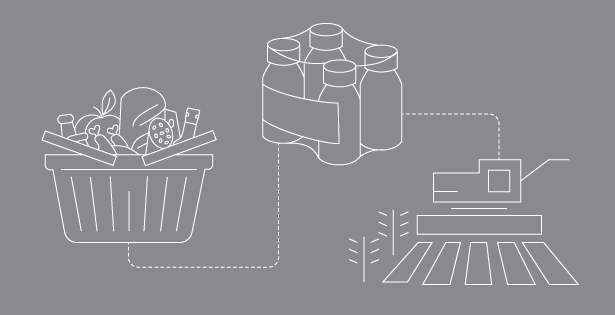The Food Safety Modernization Act (FSMA) was created to make our food supply safer by focusing on prevention rather than just reacting to problems. FSMA 204 plays a key role in this effort by enhancing traceability requirements for certain foods. In this blog, we’ll break down why FSMA 204 is important, what it requires, and what impacts it could have on your business.
What is FSMA 204?
FSMA 204 is the FDA’s final rule on the Requirements for Additional Traceability Records for Certain Foods, also known as the Food Traceability Final Rule. This rule is more stringent than existing regulations and applies to anyone involved in manufacturing, processing, packing, or holding foods listed on the Food Traceability List (FTL).
The main goal of FSMA 204 is to improve consumer safety by speeding up recall response times and putting preventative measures in place. Essentially, it’s about making the food supply chain more transparent and reliable.
FSMA 204 Requirements
If your business handles any of the foods on the Food Traceability List (FTL), you’re required to comply with FSMA 204. Compliance means adhering to specific recordkeeping practices to ensure traceability throughout the supply chain.
Foods on the Food Traceability List (FTL):
- Cheeses (excluding hard cheeses)
- Shell eggs
- Nut butters
- Fresh cucumbers
- Fresh herbs
- Fresh leafy greens (including fresh-cut)
- Fresh melons
- Fresh peppers
- Fresh sprouts
- Fresh tomatoes
- Fresh tropical tree fruits
You can view the full list here.
Key Data Elements and Critical Tracking Events
The core of FSMA 204 compliance is understanding Key Data Elements (KDE) and Critical Tracking Events (CTE). These elements are essential for maintaining solid traceability.
Critical Tracking Events (CTEs): CTEs are the key points in the supply chain where a product is moved, transformed, or otherwise handled where key lot information needs to be handed off. Tracking these events is crucial for knowing where a product is at any given time.
Key Data Elements (KDEs): KDEs are the pieces of information that must be recorded at each CTE. These details ensure that traceability is maintained, allowing for quick action if something goes wrong.
Examples of CTEs and KDEs for Fresh Produce:
- Harvesting
- CTE Description: Harvesting the required commodities
- KDEs: Location description of the recipient, commodity type, variety, quantity, unit of measure, farm location, field identifier, date of harvesting, reference type, and number.
- Cooling
- CTE Description: Cooling raw agricultural commodities (RAC)
- KDEs: Location description of the recipient, commodity type, variety, quantity, unit of measure, cooler location, date of cooling, farm location, reference type, and number.
- Initial Packing
- CTE Description: Packing raw agricultural commodities for the first time (e.g., field-packed items)
- KDEs: Commodity type, variety, date of receipt, farm location, harvester’s contact information, date of harvesting, cooling location (if applicable), traceability lot code, product description, quantity, unit of measure, initial packing location, reference type, and number.
- Shipping
- CTE Description: Moving food from one location to another
- KDEs: Traceability lot assigned, quantity, unit of measure, food product description, receiver location, date of shipment, reference type, and number.
- Receiving
- CTE Description: Receiving food by an entity other than the consumer after transportation
- KDEs: Traceability lot code, quantity, unit of measure, product description, previous source location, receiving location, date of receipt, traceability lot code source, reference type, and number.
- Transformation – As Ingredient
- CTE Description: When food is used as an ingredient in manufacturing
- KDEs: Traceability lot code, quantity, unit of measure, and transformation details.
- Transformation – New Food Produced
- CTE Description: When food is processed into a new product
- KDEs: New traceability lot code, quantity, unit of measure, product description, transformation location, traceability lot code source, date of transformation, reference type, and number.
Also, please keep in mind that depending on the commodity these KDE’s and CTE’s may change.
Traceability Lot Code
A traceability lot code (TLC) is an alphanumeric identifier assigned during specific CTEs, like initial packing, receiving, and transformation. This code stays with the product throughout the supply chain unless the product is transformed.
Traceability Lot Code Source
FSMA 204 also requires you to document the location where the TLC was assigned. This includes essential contact details such as the business name, phone number, physical address, or even geographic coordinates. The FDA provides an example of how this information should look:
FreshFood, Inc.
123 Main Street
Anytown, PA 19123
(555) 123-9876
If you’re not comfortable displaying this info openly, you can use a secure reference link to access the TLC source data or utilize the FDA’s Food Facility Registration system. It might also be practical to include this information in your system of record, ensuring it can be easily exported and shared with the FDA when needed.
Potential Business Impacts
Complying with FSMA 204 isn’t just about following the rules—it can have significant effects on your business. Here’s what you should consider:
- Compliance Risks with Small Vendors: Working with smaller, mom-and-pop vendors who might not have advanced systems in place could pose a compliance risk for your company. If these vendors struggle to meet FSMA 204 standards, your business might be held responsible, which could lead to fines, legal issues, and damage to your reputation.
- Increased Operational Costs: Compliance with FSMA 204 often requires upgrading systems, training staff, and adopting new technology. These investments can drive up operational costs, particularly for small to mid-sized businesses.
- Supply Chain Disruptions: Ensuring that all suppliers are compliant can be challenging. Non-compliance by a supplier could disrupt your supply chain, leading to delays, reduced product availability, and potential revenue losses.
- Liability Concerns: Failure to comply with FSMA 204 could expose your company to significant legal risks, including costly recalls and lawsuits. Even if a third-party supplier is at fault, your company might still be liable if proper traceability records aren’t maintained.
- Impact on Relationships with Retailers and Distributors: Retailers and distributors may start demanding proof of FSMA 204 compliance. If you can’t provide it, you might lose business opportunities or strain important relationships as they seek to avoid any risks.
- Market Competitiveness: Achieving and maintaining FSMA 204 compliance could give you a competitive edge. Consumers are increasingly concerned about food safety, and demonstrating strong traceability practices can enhance your brand’s reputation. On the flip side, non-compliance could put your business at a disadvantage compared to competitors who meet these standards.

 RSMUS.com
RSMUS.com

